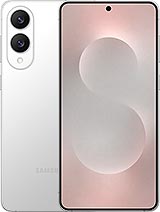Zopo Speed 8 benchmarked, all 10 cores of it

We met with the Zopo Speed 8 at MWC, and it was our first encounter with the Mediatek Helio X20 chipset, which boasts a 10-core CPU. We now have a final unit at the office for some more tinkering, and you can see how we might be eager to run some benchmarks to see what all the fuss is about.
Just a quick reminder, the Mediatek Helio X20 (or MT6797, for the more technically inclined) features a deca-core CPU with a couple of Cortex-A72 cores clocked at up to 2.3GHz, four Cortex-A53's at 2.0GHz and another four Cortex-A53's, which can can only go as high as 1.4GHz. On board the Speed 8 there are 4GB of RAM, the chipset's maximum supported amount.

We start off with the most relevant of benchmarks, the CPU-focused GeekBench. Quite expectedly, the Speed 8 scores ahead of the majority in the multi-core test, only to be beaten by the Galaxy S7 edge and its Exynos 8890. Flagships packing the mighty Snapdragon 820 come close, but still end up defeated.
In the midrange, the Samsung Galaxy A9 does have two more Cortex-A72 cores inside its Snapdragon 652 chipset, but apparently the sheer number of cores has its say here. Not as well optimized, the similarly equipped Vivo V3max is even lower down the chart. The Helio X10 is clearly lagging behind its big bro, as evidenced by the Redmi Note 3's score, and the Snapdragon variant of Xiaomi's phablet is even further down.
GeekBench 3 (multi-core)
Higher is better
-
Samsung Galaxy S7 edge
6600 -
Zopo Speed 8
5543 -
LG G5
5362 -
Xiaomi Mi 5
5358 -
Samsung Galaxy A9 (S652)
4759 -
Xiaomi Redmi Note 3 (Helio X10)
4537 -
OnePlus 2
4429 -
Vivo V3Max
3978 -
Xiaomi Redmi Note 3 (S650)
3570 -
Oppo F1 Plus
3242 -
Huawei Honor 5X
3053 -
Samsung Galaxy A7 (2016)
3039 -
Meizu m3 note
3028 -
Asus Zenfone 2 ZE551ML (Z3580)
2887 -
Lenovo Vibe K4 Note
2745 -
ZUK Z1
2341
In single-core the custom Kryos in the Qualcomm's latest and greatest SoC are markedly better performers than the Cortex-A72 that the Helio X20 relies on. Samsung's Mongoose cores are also superior, but that's about it - all the rest place behind the Speed 8.
GeekBench 3 (single-core)
Higher is better
-
LG G5
2328 -
Xiaomi Mi 5
2305 -
Samsung Galaxy S7 edge
2151 -
Zopo Speed 8
1834 -
Xiaomi Redmi Note 3 (S650)
1573 -
Samsung Galaxy A9 (S652)
1466 -
Vivo V3Max
1238 -
Oppo F1 Plus
857 -
Meizu m3 note
807 -
Huawei Honor 5X
705 -
Lenovo Vibe K4 Note
628
On Antutu, the Zopo Speed 8 is considerably behind the flagships, and yet far out of reach of the rest of the midrangers. Coincidentally, the score of the Helio X20 (Speed 8) is twice as much as that of the Helio X10 (Redmi Note 3). The X10 is also lagging behind the Snapdragon 652 in this benchmark.
AnTuTu 6
Higher is better
-
LG G5
134541 -
Xiaomi Mi 5
131758 -
Samsung Galaxy S7 edge
129229 -
Zopo Speed 8
90137 -
Vivo V3Max
76170 -
Xiaomi Redmi Note 3 (S650)
75051 -
Samsung Galaxy A9 (S652)
64591 -
ZUK Z1
54884 -
Oppo F1 Plus
51299 -
Xiaomi Redmi Note 3 (Helio X10)
45474 -
Meizu m3 note
44898 -
Lenovo Vibe K4 Note
38359 -
Huawei Honor 5X
35469 -
Samsung Galaxy A7 (2016)
35134
Basemark 2.0 puts the Zopo in the middle of the pack with a virtually identical score as the Asus Zenfone 2 ZE551ML and its Intel Atom Z3580. Here, the Snapdragon family shows a clear superiority, with the S820 on top, followed by the S810 (OnePlus 2) and S65x.
Basemark OS 2.0
Higher is better
-
Xiaomi Mi 5
2180 -
LG G5
2065 -
Samsung Galaxy S7 edge
2050 -
OnePlus 2
1622 -
Xiaomi Redmi Note 3 (S650)
1537 -
Samsung Galaxy A9 (S652)
1529 -
Zopo Speed 8
1227 -
Asus Zenfone 2 ZE551ML (Z3580)
1222 -
ZUK Z1
1178 -
Oppo F1 Plus
1092 -
Xiaomi Redmi Note 3 (Helio X10)
1018 -
Huawei Honor 5X
874 -
Meizu m3 note
852 -
Lenovo Vibe K4 Note
729
All too often we see chipsets geared towards crazy high CPU performance fail in the graphics department. That's not the case with the Helio X20 inside the Zopo Speed 8, though it's no record breaker either.
The quad-core Mali-T880MP4 is on par with (on occasion slightly better than) the Adreno 510 in the Snapdragon 650/652, and that's basically good enough. In Basemark X the Speed 8 inches ahead of said Snapdragons, but is a country mile behind leading GPUs of the Adreno 530 and Mali-T880MP12 caliber.
Basemark X
Higher is better
-
Xiaomi Mi 5
33110 -
LG G5
29456 -
Samsung Galaxy S7 edge
28480 -
OnePlus 2
21937 -
Zopo Speed 8
15756 -
Vivo V3Max
15430 -
Samsung Galaxy A9 (S652)
15290 -
Xiaomi Redmi Note 3 (S650)
14732 -
ZUK Z1
13596 -
Asus Zenfone 2 ZE551ML (Z3580)
12426 -
Xiaomi Redmi Note 3 (Helio X10)
8540 -
Oppo F1 Plus
6204 -
Samsung Galaxy A7 (2016)
5210 -
Huawei Honor 5X
5009 -
Meizu m3 note
4567 -
Lenovo Vibe K4 Note
4072
In GFXBench the story is more of the same. With some flagships having QuadHD resolution, the superiority of the high-end chips may be less pronounced in onscreen tests, but it is there nonetheless. Speaking of raw GPU power, look at the normalized 1080p offscreen tests, where the Adreno 530 (G5, Mi 5) and Mali-T880MP12 (S7 edge) post up to 3 times higher figures than the Speed 8's Mali-T880MP4.
GFX 3.0 Manhattan (1080p offscreen)
Higher is better
-
LG G5
47 -
Xiaomi Mi 5
45 -
Samsung Galaxy S7 edge
40 -
ZUK Z1
28 -
OnePlus 2
22 -
Zopo Speed 8
14 -
Vivo V3Max
14 -
Xiaomi Redmi Note 3 (S650)
14 -
Samsung Galaxy A9 (S652)
13 -
Xiaomi Redmi Note 3 (Helio X10)
8.5 -
Oppo F1 Plus
7 -
Samsung Galaxy A7 (2016)
5.7 -
Huawei Honor 5X
5.6 -
Meizu m3 note
5.4 -
Lenovo Vibe K4 Note
4.2
GFX 3.1 Manhattan (1080p offscreen)
Higher is better
-
Xiaomi Mi 5
30 -
LG G5
30 -
Samsung Galaxy S7 edge
29 -
OnePlus 2
16 -
Zopo Speed 8
11 -
Vivo V3Max
9.4 -
Samsung Galaxy A9 (S652)
9.3 -
Xiaomi Redmi Note 3 (S650)
9.1 -
Xiaomi Redmi Note 3 (Helio X10)
4 -
Oppo F1 Plus
3.3 -
Lenovo Vibe K4 Note
2.6 -
Meizu m3 note
2.5
At the actual respective display resolutions the difference gets smaller, with the Speed 8 only needing to render a bit more than half the pixels of the G5 and S7 edge. The more demanding Manhattan 3.1 test further narrows the gap, and actually puts the Speed 8 ahead of midrange phablet competition.
GFX 3.0 Manhattan (onscreen)
Higher is better
-
Xiaomi Mi 5
43 -
ZUK Z1
28 -
LG G5
28 -
Samsung Galaxy S7 edge
27 -
OnePlus 2
22 -
Xiaomi Redmi Note 3 (S650)
14 -
Vivo V3Max
14 -
Samsung Galaxy A9 (S652)
13 -
Zopo Speed 8
12 -
Xiaomi Redmi Note 3 (Helio X10)
7.9 -
Oppo F1 Plus
7 -
Huawei Honor 5X
6.1 -
Samsung Galaxy A7 (2016)
5.7 -
Meizu m3 note
5.4 -
Lenovo Vibe K4 Note
4.2
GFX 3.1 Manhattan (onscreen)
Higher is better
-
Xiaomi Mi 5
29 -
OnePlus 2
16 -
Samsung Galaxy S7 edge
15 -
LG G5
15 -
Zopo Speed 8
11 -
Vivo V3Max
9.1 -
Samsung Galaxy A9 (S652)
9.1 -
Xiaomi Redmi Note 3 (S650)
9.1 -
Xiaomi Redmi Note 3 (Helio X10)
3.9 -
Oppo F1 Plus
3.3 -
Meizu m3 note
2.5 -
Lenovo Vibe K4 Note
2.1
Reader comments
- chris
- 29 May 2016
- mNC
What protection glass. What gorilla glass used? Why this information is not given by the manufacturer / distributor?
- Spike1
- 24 May 2016
- rRS
When it comes to comparing devices on batteries and power GSMArena needs to compare stuff differently. Most of people are interested in 1 category. Like if I buy Note series this tells that I careless for smaller screens or non QHD screens. And Tha...
- AnonD-531318
- 24 May 2016
- tDT
Dont take benchmark in your life.. Just buy phone which you want to buy..




 Samsung
Samsung Sony
Sony Samsung
Samsung Xiaomi
Xiaomi Samsung
Samsung


